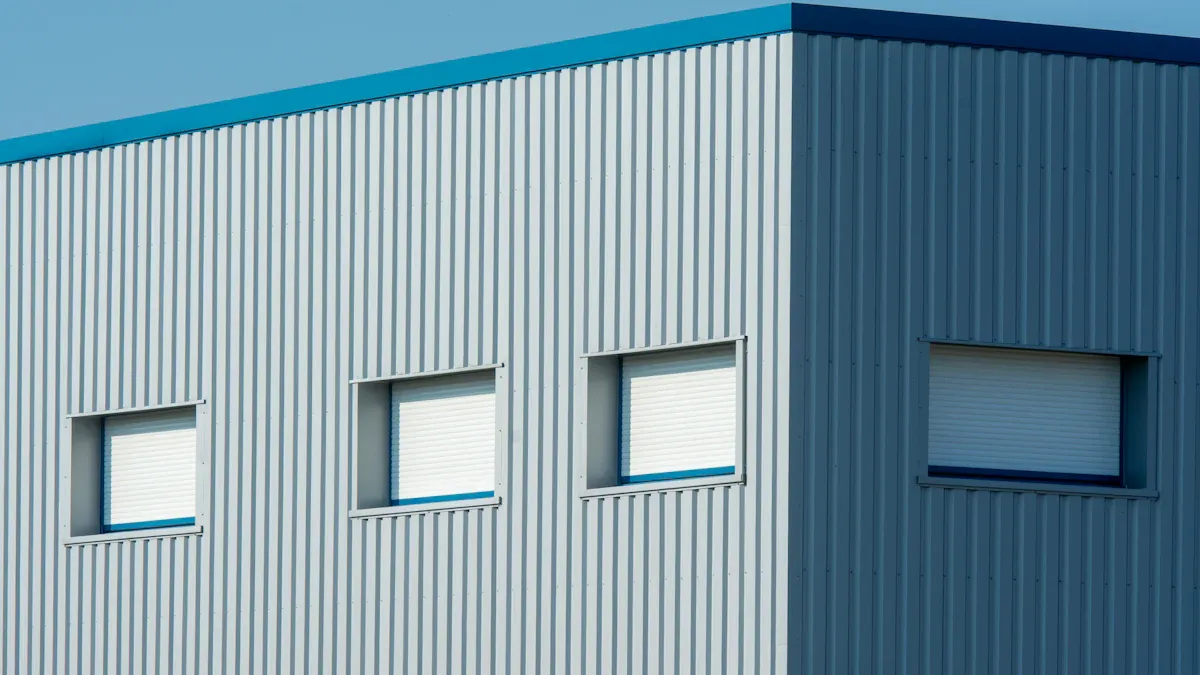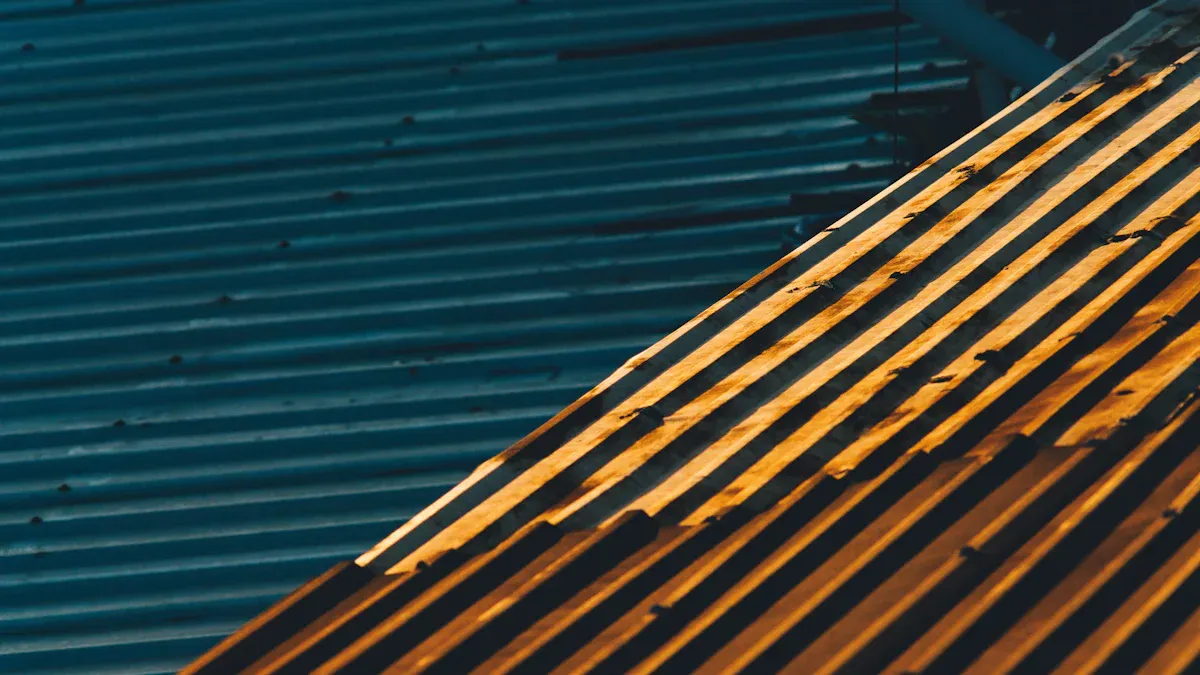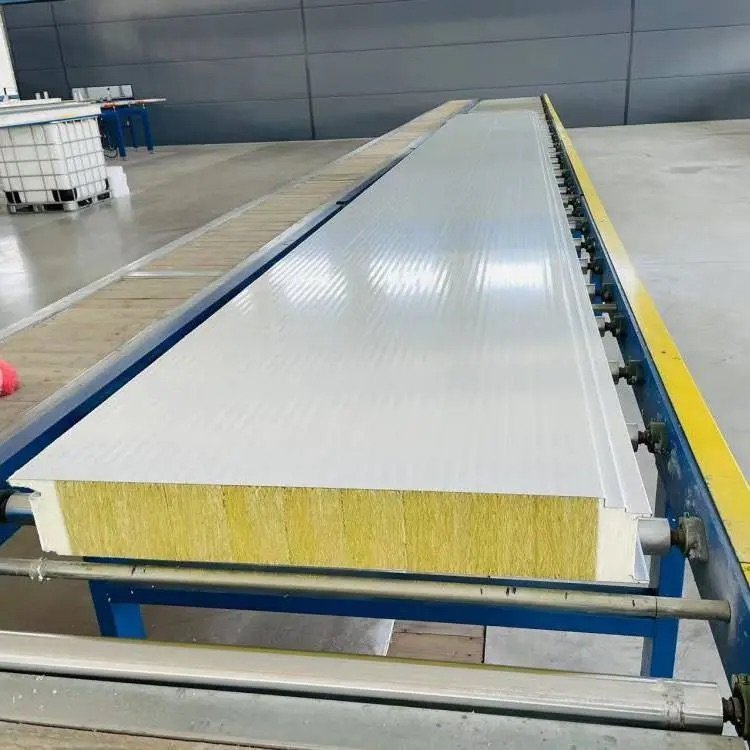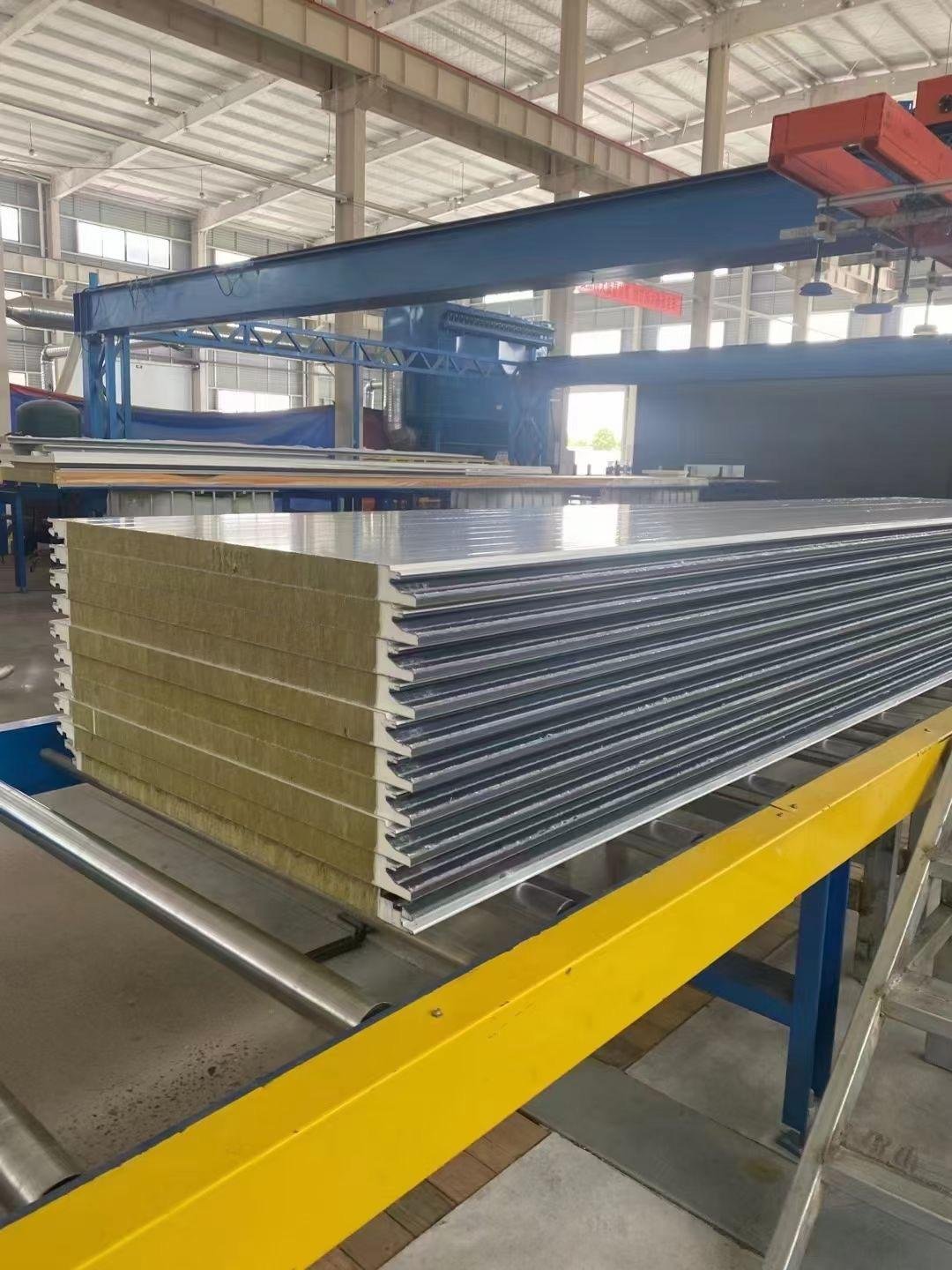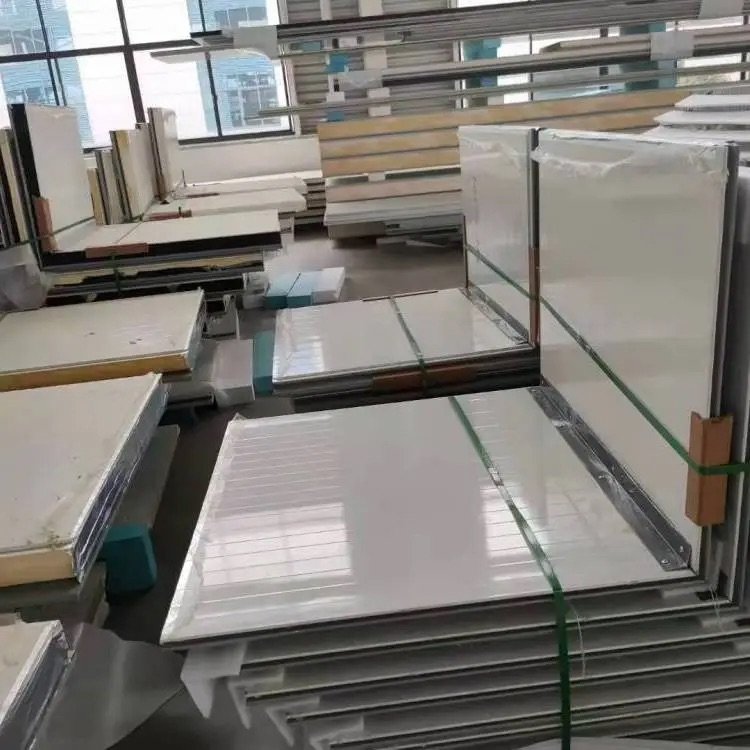
Sandwich panels are light structures with a core in the middle. They are important in boats because they are strong and don’t rust. These panels make ships lighter, saving fuel. People want green materials and fancy boats, so sandwich panels are popular in shipbuilding.
Key Takeaways
Sandwich panels are light and strong, making ships safer and saving fuel.
These panels do not rust and cut noise, keeping ships in good shape and rides quieter.
Using sandwich panels saves money over time with less fuel use and fewer fixes.
What Are Sandwich Panels and Their Role in Marine Applications?
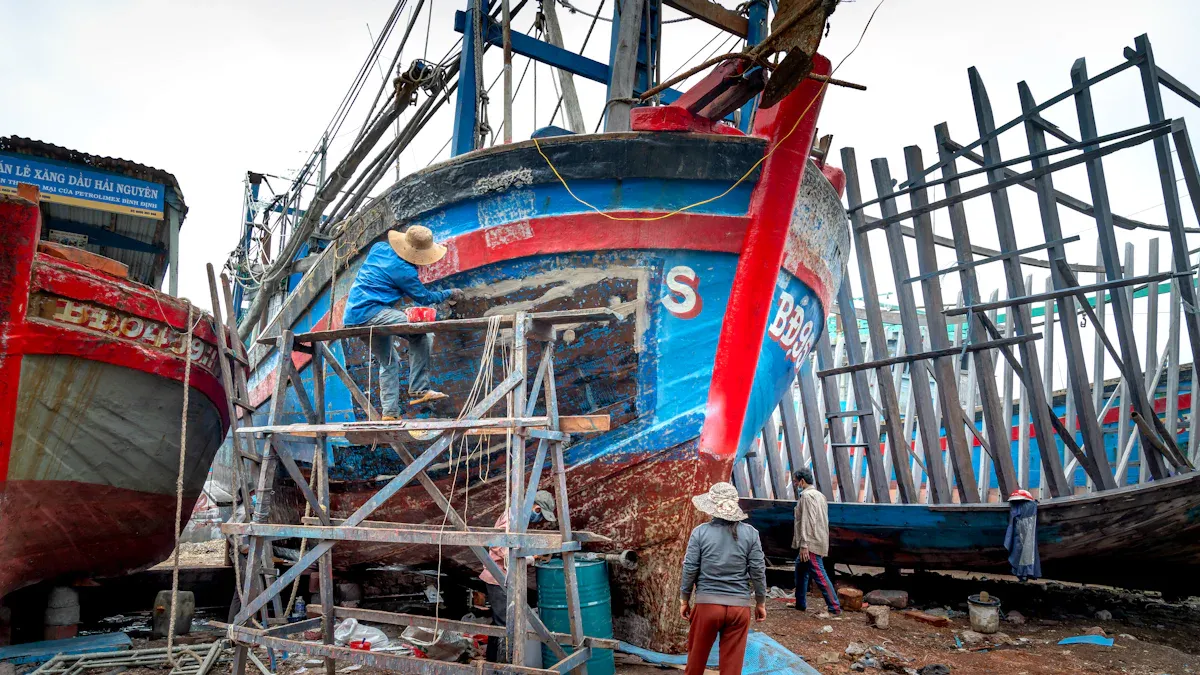
Structure and Composition of Sandwich Panels
Sandwich panels have three layers. A light core is between two strong outer layers. The core uses materials like foam, honeycomb, or balsa wood. The outer layers are often fiberglass, aluminum, or carbon fiber. This design makes the panels strong but not heavy, perfect for boats.
For instance, CarbonCore Plastic Honeycomb cores are common in boat building. These cores absorb shocks and spread impact energy evenly. They protect the inner layer from damage. The honeycomb also keeps heat in and stops condensation. This helps prevent mildew inside boats. Strength, durability, and insulation make these panels better than older materials.
Key Properties for Marine and Shipbuilding Use
Sandwich panels have important features for building ships. They handle impacts well, protecting ships during crashes. They reduce noise by stopping vibrations, making ships quieter. They keep heat in and stop condensation, which prevents mildew. These panels are also strong under stress, keeping ships safe.
Property | Description |
|---|---|
Impact Strength | Protects inner layers by absorbing crash energy. |
Vibration Damping | Lowers noise and vibrations for a peaceful ride. |
Thermal Insulation | Stops condensation and mildew, keeping ships in good shape. |
Shear Properties | Stays strong under pressure, ensuring safety and durability. |
Common Marine Applications
Sandwich panels are used in many parts of ships, like hulls, decks, and walls. Hulls use them to absorb energy and resist impacts, protecting the ship. Decks benefit from less noise and smoother rides. Walls use their insulation to stop condensation and mildew.
Application | Benefits |
|---|---|
Hulls | Better impact resistance and energy absorption. |
Decks | Quieter rides with reduced noise and vibrations. |
Bulkheads | Stops condensation and mildew with better insulation. |
These uses show why sandwich panels are key in modern shipbuilding.
Advantages of Sandwich Panels in Shipbuilding
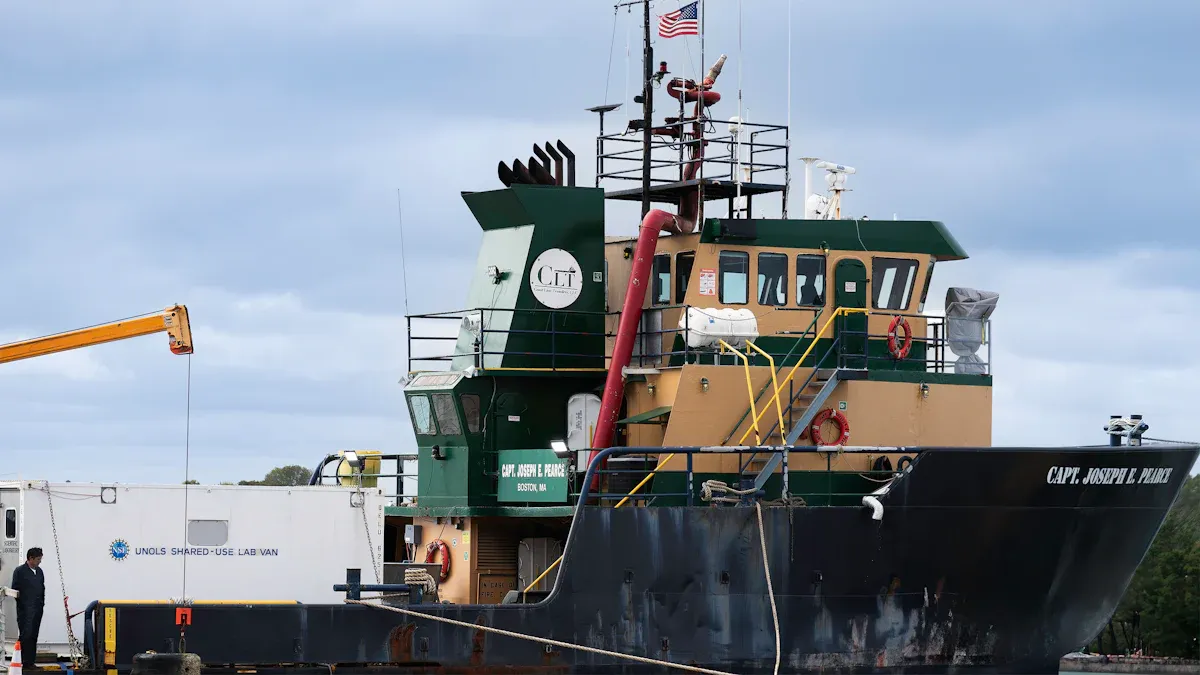
Lightweight and Strong Build
Sandwich panels are light but very strong. They don’t need many stiffeners, which makes ships lighter. For example, aluminum sandwich panels absorb 40% more crash energy than older designs. This is great for navy ships needing strength and less weight. They also stay safe under different loads, making them reliable for boats.
Feature | Sandwich Panels | Older Designs |
|---|---|---|
Weight Reduction | Lighter without stiffeners | Heavier with stiffeners |
Energy Absorption | Absorbs more crash energy | Absorbs less crash energy |
Performance | Works well under all loads | Performance varies |
Rust Resistance and Long Life
The sea is tough with salty water and wet air. Sandwich panels, like metal core ones, don’t rust easily. They last longer and need fewer repairs. They also handle small impacts well, making them dependable for ships.
Heat and Noise Insulation
Sandwich panels keep heat in and block noise. Panels with wool cores resist fire and stop sound well. Foam cores give both heat insulation and strength. This keeps ships comfy and saves energy.
Saves Money Over Time
Sandwich panels cost more at first but save money later. Their light weight uses less fuel, and their strength means fewer repairs. Metal core panels are strong, insulated, and last long, making them a smart pick for shipbuilders today.
Materials Used in Sandwich Panels
Core Materials (e.g., foam, honeycomb, balsa wood)
The core in sandwich panels is very important. Common cores include foam, honeycomb, and balsa wood. Each type has special benefits for boats. Foam cores, like polypropylene, absorb energy well. They are great for handling slow impacts on ships. Honeycomb cores, made of aluminum or plastic, are strong but light. This makes them a favorite in shipbuilding. Balsa wood is eco-friendly and holds heavy loads. It stays strong even during fires, lasting longer than foam.
Outer Layer Materials (e.g., fiberglass, aluminum, carbon fiber)
The outer layers protect sandwich panels from damage. Fiberglass, aluminum, and carbon fiber are popular choices. Fiberglass doesn’t rust, so it works well in salty water. Aluminum is light and recyclable, making it eco-friendly. Carbon fiber is very strong and stiff, handling heavy loads easily. Together with the right core, these layers make panels tough and long-lasting.
Metallic Corrugated Core Sandwich Panels and Their Benefits
Metallic corrugated core panels are changing shipbuilding. These panels have wavy metal cores that absorb crash energy. Steel sandwich panels can take in 40% more crash energy than older designs. This improves safety during collisions. Special designs with metal and glass fiber increase energy absorption by 74.72%. These panels also handle slow impacts well. They are strong, efficient, and perfect for modern ships.
Comparing Sandwich Panels to Traditional Materials
Performance: Strength, Weight, and Durability
Sandwich panels are stronger and lighter than older materials. Their light weight helps ships use less fuel and move better. Tests like ASTM C 393 and ASTM C 297 show they are very strong and stiff. These panels also handle crashes well, absorbing 40% more energy than older designs. For navy ships, this means better safety during crashes and stronger ships after impacts.
Test Method | What It Tests |
|---|---|
ASTM D 1781 | Checks how well the facesheets stick to the core. |
ASTM C 393 | Measures stiffness, strength, and how the core handles pressure. |
ASTM C 297 | Tests how strong the panel is through its thickness. |
ASTM C 364 | Looks at how well the panel handles pressure from the sides. |
New designs can absorb 23.7% more energy. This makes them great for slow or small impacts.
Cost Analysis: Initial vs. Long-Term Investment
Sandwich panels cost more at first but save money later. Their light weight means ships use less fuel, cutting costs over time. Shipbuilders are using more of these panels because they last long and save energy. Experts predict the market will grow from $10 billion in 2023 to $18 billion by 2032. This growth is due to new technology and eco-friendly building methods.
Strengths: Very strong, light, and keeps heat in well.
Weaknesses: Costs more at the start than older materials.
Government rules can change prices.
Making these panels can be costly.
People want greener materials, increasing demand for sandwich panels.
Sustainability and Environmental Impact
Sandwich panels help make shipbuilding more eco-friendly. Aluminum panels can be recycled, cutting down on waste. Balsa wood cores break down naturally, making them good for the planet. These materials help shipbuilders follow green practices. IMO-certified adhesives also meet global safety rules, adding to their eco-friendly benefits.
🌱 Tip: Pick materials like balsa wood or aluminum panels. They are better for the planet and meet safety rules.
Sandwich panels have many benefits for ships and boats. They are light, strong, and keep heat in well. This makes ships use less fuel and need fewer repairs.
They make building ships faster and create less waste.
Prefab panels save time and cut machine pollution.
Aluminum panels can be reused, helping the environment.
Studies show sandwich panels take in 40% more crash energy than older materials. This makes them safer and saves money. Using them helps lower pollution and waste worldwide.
These panels are changing shipbuilding, making ships greener and better for the future.
FAQ
Why are sandwich panels better than older materials for ships?
Sandwich panels are light and very strong. They absorb energy well, keeping ships safer during crashes. They also don’t rust, which is great for the sea.
Why is aluminum used a lot in sandwich panels?
Aluminum is light and can be recycled. It doesn’t rust and lasts long, so it needs fewer repairs. This makes it a top pick for ships.
Do sandwich panels help ships save fuel?
Yes, they are light and make ships weigh less. This means ships use less fuel, saving energy and money for builders.

